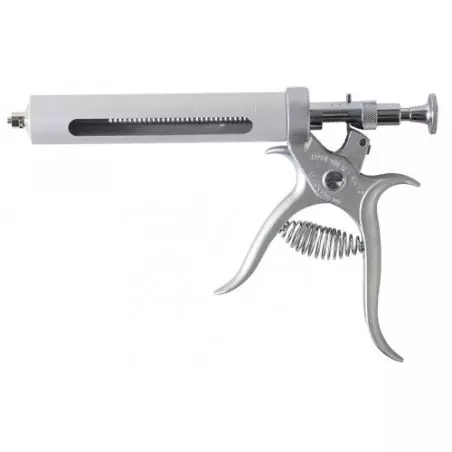This paper summarizes observations recorded over a 4-year (1438-day) period regarding the ability of a 1-night period of downtime to prevent mechanical spread of porcine reproductive and respiratory syndrome virus and Mycoplasma hyopneumoniae ( M. hyo) between pig populations by personnel and fomites.
The practice of restricting personnel entry to swine farms for extended periods of time following contact with other pigs (downtime) is a highly controversial subject throughout the global swine industry. For many years, downtime periods ranging from 48 to 96 hours have been enforced to reduce the risk of pathogen introduction to farms by personnel, despite a lack of data supporting these periods of time.

Our observations were recorded in conjunction with a 4-year evaluation of area spread and biosecurity of PRRSV and M hyo conducted at the Swine Disease Eradication Center Production Region Model (St Paul, Minnesota) over the period 2006-2010.5,6 For the purpose of this report, we will focus on activities that occurred in three facilities that were utilized throughout the 4-year area spread and biosecurity project: the source population, the on-site residence, and the high-level biosecurity building. Over the course of the 1438-day study period, a total of 25 people were involved in movements and activities between the aforementioned facilities.
Each day, study personnel showered and donned clean clothing and footwear in the on-site residence. Personnel then entered the high-level biosecurity (filtered) facility where they donned clean clothing and boots and washed hands prior to entering the animal air space which contained pigs naive for porcine reproductive and respiratory syndrome virus (PRRSV) and Mycoplasma hyopneumoniae (M hyo). Prior to animal contact, swabs from hands, coveralls, and boots were collected and tested for PRRSV RNA and M hyo DNA by polymerase chain reaction. Following completion of animal-care duties, personnel then entered the source population facility, which contained 300 pigs infected with PRRSV and M hyo. Following completion of animal care, personnel then re-entered the on-site residence where they showered, donned clean clothing, and remained away from animal contact for 1 night. The next morning, the process was repeated. This pattern of personnel movement was repeated for 1438 days.
In addition to the daily sampling of animals, people, and inanimate objects, two sets of control protocols, the PRRSV Spread Control and the PRRSV Downtime Control, were conducted. These controls did not involve M hyo because they were conducted during year 1 of the study, when PRRSV was the only pathogen previously inoculated in the source population. The objective of the Spread Control was to document whether PRRSV spread to naive sentinels had occurred by personnel and fomites following contact with infected animals (Figure 2). For 5 consecutive days, one person contacted infected animals in the source population and then immediately contacted naive sentinels (n = 10 pigs 6 to 8 weeks of age) in the high-level biosecurity building in the absence of basic sanitary measures (showering, washing hands, changing coveralls and boots). The objective of the Downtime Control was to document whether PRRSV transmission by personnel and fomites could be prevented by basic sanitary measures (Figure 3). For 5 consecutive days, one person moved from the source population to the high-level biosecurity building, which contained 10 naive sentinel pigs 6 to 8 weeks of age. Before entering the high-level building, this person took a shower and changed coveralls and boots between groups, but did not observe a designated period of downtime.
Over the course of the 1438-day study period, a total of 25 people were involved in movements and activities between the aforementioned facilities. A total of 7174 and 4833 personnel and fomite samples, respectively, were tested for PRRSV RNA and M hyo DNA. All swabs were PCR-negative and all animals (n = 480) housed in the high-level biosecurity facility remained PRRSV-naive and M hyo-naive throughout the entire 4-year study period. The approximate duration of the sanitation and downtime period was 14 to 16 hours each day. Mechanical spread of PRRSV secondary to contact with contaminated personnel and fomites was observed during the Spread Control protocol. Five of 10 sentinels were PRRSV-positive on Day 5 post exposure, while 10 of 10 sentinels were PRRSV-positive on Day 20 post exposure. In addition, PRRSV RNA was detected on 40 of 45 swabs collected from personnel and fomites upon entry into the high-biosecurity facility following contact with the infected animals in the source population. In contrast, PRRSV transmission to sentinels was prevented during the Downtime Control protocol, as all sentinels remained PRRSV-negative over the testing period. While PRRSV RNA was detected on 42 of 45 swabs from personnel and fomites collected upon exiting the source population across all 5 exposure days, all swabs (45 of 45) collected upon entry into the sentinel facility following a shower and coverall-boot change were PCR-negative. The time required to shower and change coveralls and boots between groups was approximately 45 minutes.
Under the conditions utilized to compile this report, a downtime period of 1 night (14 to 16 hours in duration) prevented the spread of PRRSV and M hyo by personnel and fomites between infected and susceptible populations. While the information is strictly observational in nature and was collected under model conditions, it challenges the validity of extended downtime periods.
In conclusion, while these observations are intriguing and have the potential to improve the efficacy of the personnel downtime policies within the industry, more research is clearly needed to investigate and clarify questions which still exist surrounding this issue. For example, since these observations are applicable only to PRRSV and M hyo, we do not know whether they would be repeatable across other pathogens such as porcine circovirus type 2 or swine influenza virus.
Pitkin A, Otake S, Dee S. A one-night downtime period prevents the spread of porcine reproductive and respiratory syndrome virus and Mycoplasma hyopneumoniae by personnel and fomites (boots and coveralls). J Swine Health Prod. 2011;19(6):345?348.







